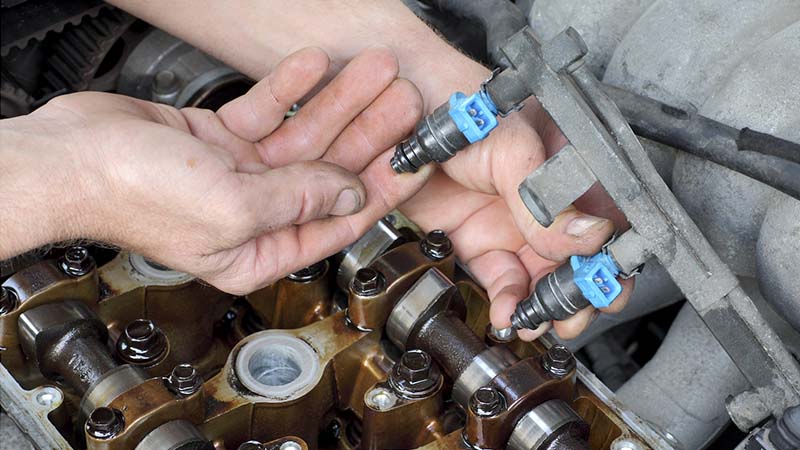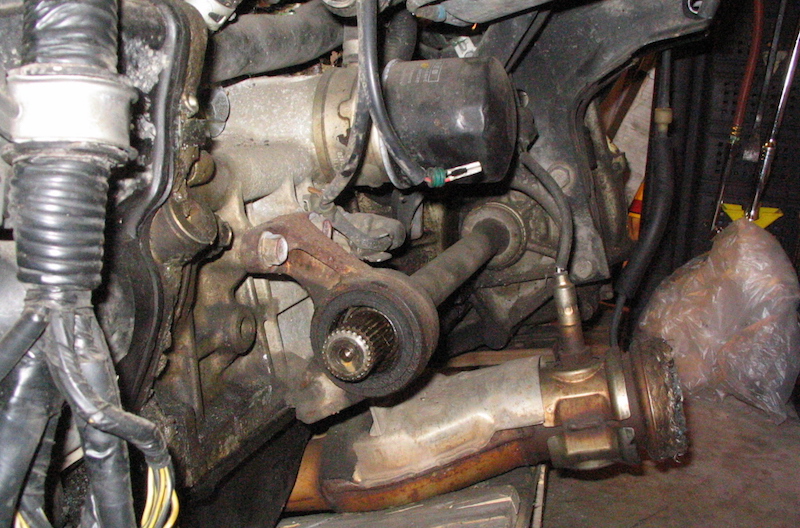Engine misfires can be a mysterious, frustrating problem—and information around them often makes them sound worse than they are. The symptoms vary by vehicle but are usually described as a stumble or brief hesitation in power delivery. An engine misfire can be temporary or continuous and will sometimes generate a check-engine code. But don't be alarmed. Though it seems like an expensive fix, it isn't always. Read on as we demystify misfires.
What is a Misfire?
First, let's examine what causes a misfire. You already know an engine needs three components to fire the cylinder: fuel to ignite, oxygen to burn that fuel, and a spark to ignite the mix. Take away any of those elements, and the cylinder will not produce the expected bang. That sounds like an easy enough diagnosis, but other cylinder misfire causes are due to incorrect ignition timing, vacuum leaks, or valve spring wear.
If your engine is misfiring, it's best to find the problem and fix it as soon as possible. Misfires reduce gas mileage and increase emissions, which can cause you to fail an emissions test. More seriously, cylinder misfires can cause damage to other engine parts, like the oxygen sensors or catalytic converter. Let's look at what to do when diagnosing this issue.
When It's the Spark
Ignition parts that control spark to an engine are primarily wear parts that are designed to provide maximum performance for their service life, then be replaced as needed. As these parts wear or corrode, they will gradually increase impedance to the point that little or no electricity makes it to the spark plug to ignite. Since this happens over time, you may initially have small intermittent misfires you don't even notice that gradually get worse over time. This is a big clue that your misfire is caused in the ignition system, so start there. Fortunately, most of these items are affordable and easy to quickly replace.
Spark plugs are cheap and easily swapped in just a few minutes. Ignition wires that are old can show signs of wear and are simple to replace as well. Older vehicles with a traditional distributor might just need a new cap and rotor. The coil packs on modern vehicles are less affordable but are still easily serviced.
When It's the Fuel
After the ignition system is checked out, move on to the fuel system. Parts here typically last longer but still wear out. Perhaps just the fuel filter is clogged, or the fuel injectors are dirty. If those are good, the fuel pump or the mass airflow sensor may be starting to fail.
The EGR valve might be sticking with age, letting exhaust dump into the intake manifold. Emissions systems are precisely designed, and spent exhaust in the wrong part of the ignition cycle will cause issues. Or maybe you are lucky and just filled up with a tank of bad gas.
Fuel-system misfire symptoms will suddenly appear and are often more noticeable at idle than at highway speed. If your engine is chugging at a stoplight but smooth at speed, take a hard look at the fuel system.
When It's Mechanical
Engine misfires can also be a little more complicated. Check the vacuum lines connected to the intake manifold. Look for cracks and replace lines if you find any problems. Also check the condition of intake manifold gaskets, especially around the throttle body. Take a timing light under the hood to make sure the timing belt or chain has not slipped or jumped. Finally, pop off a valve cover and have a close look at the valve train for any obvious damage.
Unlike fuel misfire symptoms, mechanical misfire symptoms will not go away with higher engine speeds, and often get worse. The misfire can be serious enough to cause noticeable vibration in the cabin, or even backfires. By this point, your engine's PCM should show a code.
About That Check Engine Light
If you have a “Check Engine" light, your car's computer is storing information about what problem was detected. The great thing about diagnostic codes is that they can be very specific, even often narrowing down which cylinder is misfiring. That's less time spent hunting down the problem, so it makes sense to use a code reader to get to the root of the problem.
Want to Learn How to Fix an Engine Misfire?
Click here to read more.
Have you ever solved a misfire problem? Tell us your solution and advice in the comments below!











